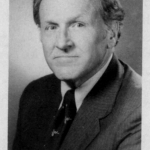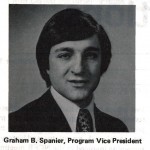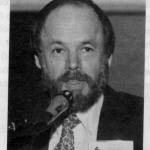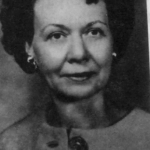Structure and Governance in 1972–73
¶ 1 Leave a comment on paragraph 1 0 In the 1973 revision of the NCFR Constitution, the role of the Sections was enlarged, giving them more control over their own activities, establishing their own qualifications for membership, and planning programs in addition to the Annual Conference. The Sections took the responsibility of electing their officers, preparing their bylaws, and establishing a dues structure. The chair of each Section became a Board member. Sections had to have membership of 5% of the total NCFR membership to continue in action.
¶ 2 Leave a comment on paragraph 2 0 Other constitutional changes included the following:
- ¶ 3 Leave a comment on paragraph 3 0
- The Secretary’s term of office was 2 years.
- The President-Elect would become finance chair and was no longer program chair.
- The immediate Past President was to serve for an additional year on the Executive Committee and Board of Directors.
- The Editors became members of the Board.
- A Section on Social Action was added.
- The President became chief spokesperson for the organization.
¶ 4 Leave a comment on paragraph 4 0 The standing committees were: Finance, International Liaison, Membership, Public Relations, and Publications.
¶ 5 Leave a comment on paragraph 5 0 A motion was carried that affirmative action principles be brought to the attention of NCFR nominating committee and committee chairs to ensure active recruitment of women and members of racial/ethnic minority groups.
¶ 6 Leave a comment on paragraph 6 0 A Business Leaders Committee was established with Grace Richardson, Wallace C. Fulton, Graham B. Spanier, Douglas H. Sprenkle, Claire Lehr, Beatrice Paolucci, Clark Blackburn. Herbert Otto, Eleanore B. Luckey, and James Lieberman (chair).
Gallery
- Wallace Fulton
- Graham Spanier
- Douglas Sprenkle
- Beatrice Paolucci
- Eleanore Luckey







Comments
0 Comments on the whole Page
Login to leave a comment on the whole Page
0 Comments on paragraph 1
Login to leave a comment on paragraph 1
0 Comments on paragraph 2
Login to leave a comment on paragraph 2
0 Comments on paragraph 3
Login to leave a comment on paragraph 3
0 Comments on paragraph 4
Login to leave a comment on paragraph 4
0 Comments on paragraph 5
Login to leave a comment on paragraph 5
0 Comments on paragraph 6
Login to leave a comment on paragraph 6
0 Comments on paragraph 7
Login to leave a comment on paragraph 7
0 Comments on paragraph 8
Login to leave a comment on paragraph 8
0 Comments on paragraph 9
Login to leave a comment on paragraph 9
0 Comments on paragraph 10
Login to leave a comment on paragraph 10
0 Comments on paragraph 11
Login to leave a comment on paragraph 11
0 Comments on paragraph 12
Login to leave a comment on paragraph 12